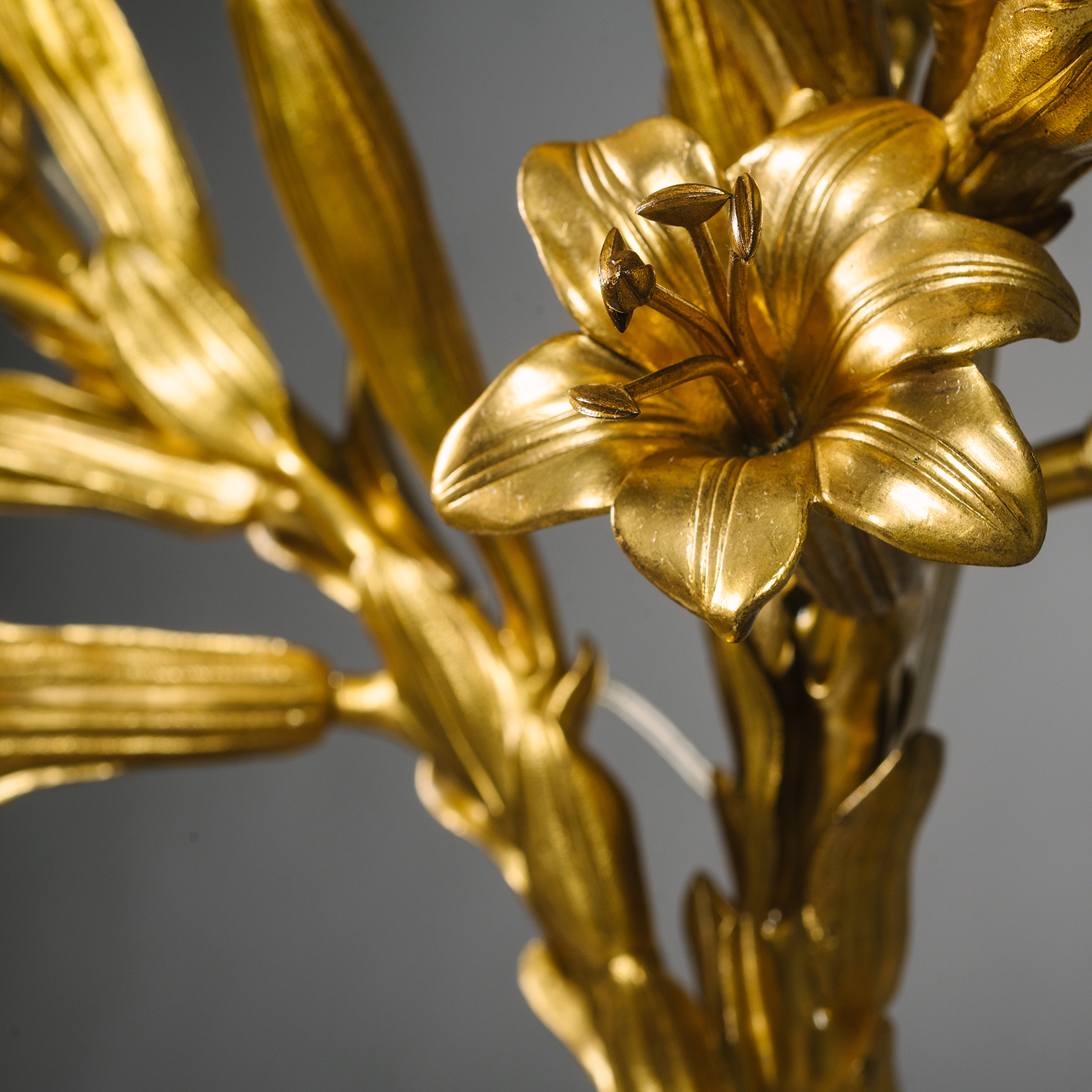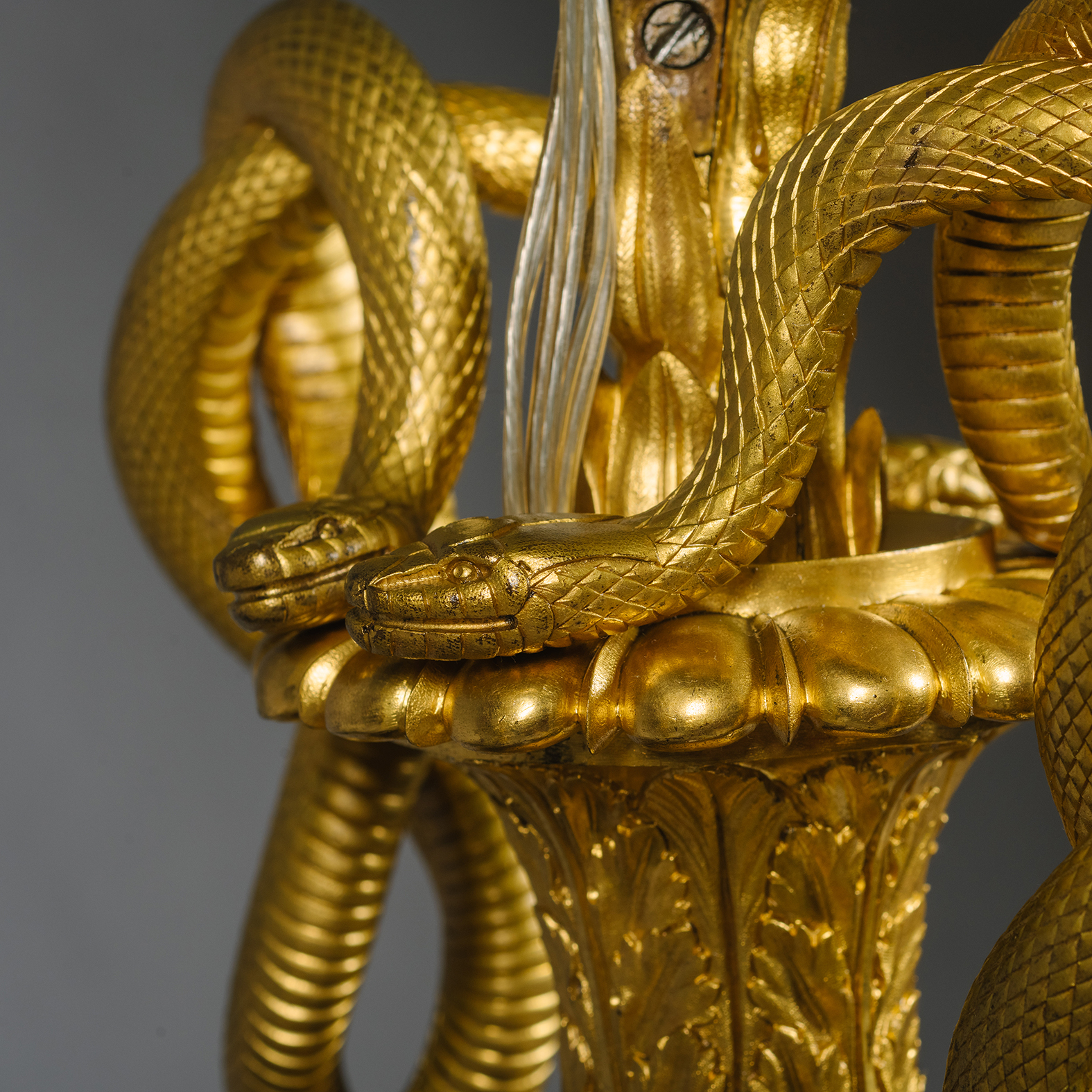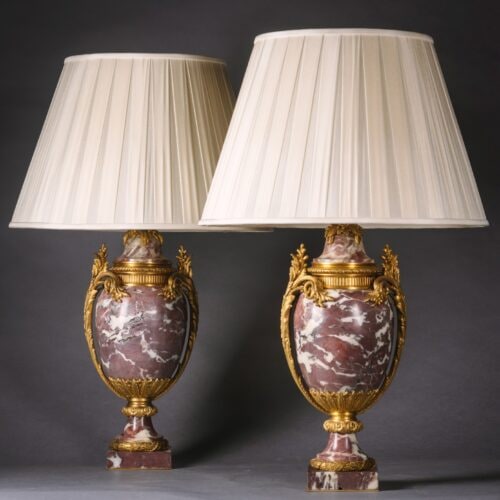A Pair Of Louis XVI Style Gilt-Bronze And Royal Blue Sèvres-Style Porcelain Candelabra
£36,000
A Pair Of Louis XVI Style Gilt-Bronze And Royal Blue Sèvres-Style Porcelain Three-Light Vase Candelabra. Each baluster-form vase applied with a fruiting...
Dimensions
Height: 104 cm (41 in)Largeur : 35 cm (14 in)
Depth: 26 cm (11 in)
Description
A Pair Of Louis XVI Style Gilt-Bronze And Royal Blue Sèvres-Style Porcelain Three-Light Vase Candelabra.
Each baluster-form vase applied with a fruiting swag, flanked by twin entwined-serpent handles, issuing lily flower branches with three candle lights. On a leaf tip-cast socle and square base.
Wired for electricity.
These foliate candelabra are modelled after several 18th century originals. For an example of a pair with Sèvres ‘bleu nouveau’ porcelain, see P. Kjellberg, ‘Objets Montés’, Paris, 2000, p. 168. A similar porcelain example, without the fruiting garland, is in the Victoria and Albert Museum, London, Jones Collection 982A-1882 (see H. Ottomeyer, P. Pröschel et al., Vergoldete Bronzen, Munich, 1986, p. 259). A further example, with a white marble body, is at the Münchner Residenz. Clearly a popular design, the snake-handled vase was copied throughout the 19th century most notably by Henry Dasson and Alfred Beurdeley. The high quality of the bronzework to the present pair also credits such an attribution.

Emmanuel Alfred Beurdeley, design for a serpent handled vase in pencil and watercolour. No. 395 (courtesy Musée des Arts Décoratifs).
These candelabra belonged to Alfred de Rothschild (1842–1918) of N.M. Rothschild Bank who became a director of the Bank of England in 1868, at the age of 26. They formed part of Alfred’s collection at Halton House, Buckinghamshire. After his death they passed to his nephew Lionel Nathan de Rothschild (1882 –1942) and in turn, to his son, Edmund de Rothschild (1916-2009) at Exbury House, Hampshire.

Alfred Charles De Rothschild (1842-1918) ©The Rothschild Archive Trust
Alfred de Rothschild was considered the finest amateur judge of French eighteenth-century art in England. He was a friend of Sir Richard Wallace, and as trustee of the Wallace Collection from 1897 until his death in 1918. Alfred’s London townhouse was Number One Seamore Place, were he hosted in great style the most powerful and famous people of the day and housed a remarkable art collection with magnificent furniture and decorations. In 1884 Alfred’s country estate, Halton House was completed. Set amongst the finest beechwoods in the county and commanding glorious views over the Vale of Aylesbury, Halton House was a modern French chateau, designed for entertaining on the grandest scale. Paul Villers, writing in 1901, compliments Alfred de Rothschild, for it “was he who designed the furnishings and the decoration with a certainty of taste and an understanding of the things of art that are quite exceptional”.

The Salon at Halton House, Photographed circa 1888. ©The Rothschild Archive
France, Circa 1860-70.
Date
Circa 1860-70
Origine
France
Moyen
Bronze doré et porcelaine
Alfred de Rothschild (1842-1918) at Halton House, Buckinghamshire.
Lionel de Rothschild (1882-1942).
Edmund de Rothschild (1916-2009) at Exbury House, Hampshire.


















 Imprimer
Imprimer


